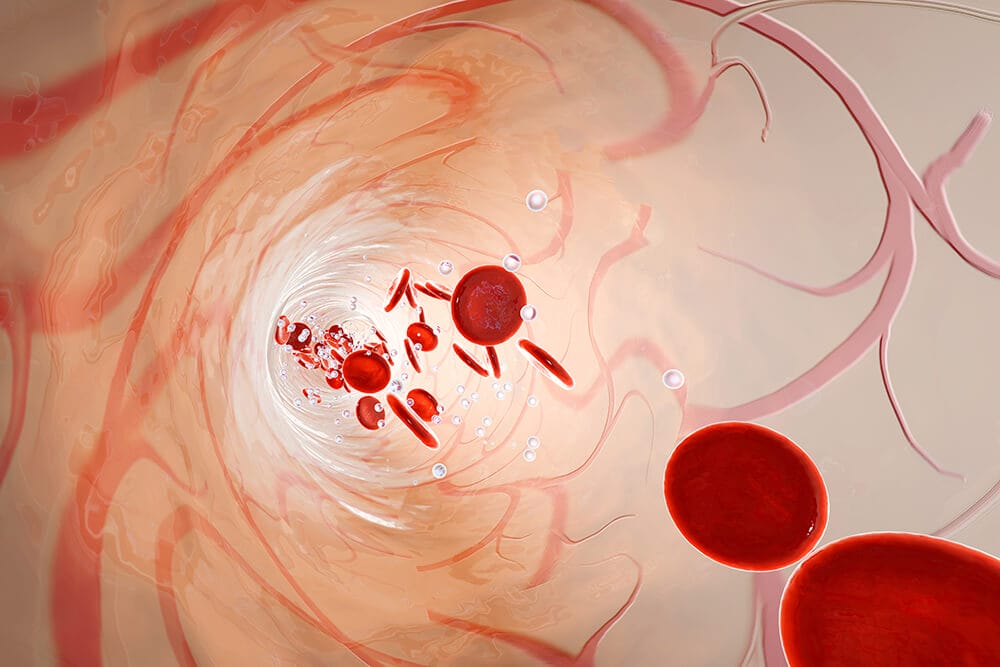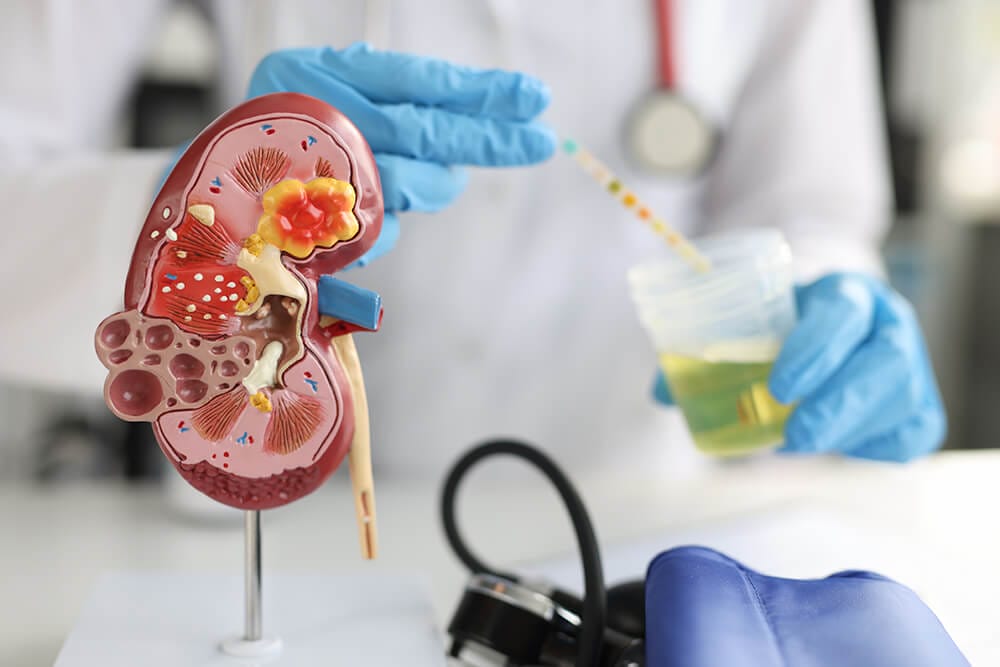
Blood Disorders: Types, Symptoms, Diagnosis & Treatment
Overview on blood cell disorders
Blood is the life source of every living being. Some people might think that the heart is essential for living, while others think it’s the brain, but ancient people always associated blood with the essence of life and death. Blood is truly the essence of living and having a healthy blood system adds to the person’s overall well-being.
There are three main components of the blood. Even if one of the components incurs an issue, it leads to the person developing blood cell disorders. The blood disorders can often be treated with medications or by incorporating certain foods in the diet that are rich in iron. But, when the condition is genetic, it can require lifelong treatment and therapy.
Symptoms of blood cell disorders
There are a wide number of blood disorders known to science. Each has its own set of symptoms and not all people experience all of those signs and symptoms. There are three main parts of the blood—red blood cells, white blood cells, and platelets. All of these are in the plasma that collectively makes up the blood.
There is a range determined as normal for all three components of blood. If the levels of any one component become higher or lower, it leads to blood disorders.
The common symptoms are:
-
- Fatigue
- Weakness
- Shortness of breath
- Confusion
- Trouble with weight
The blood disorders can be collectively placed in a group based on the type of component affected and if the levels are lower than normal or higher than normal. These are:
-
- Anemia is when there is a low level of red blood cells in the blood
- Leukopenia is when there is a low level of white blood cells in the blood
- Thrombocytopenia is when the platelet count is low
- Erythrocytosis is when there is a high level of red blood cells in the blood
- Leukocytosis is when there is a high level of white blood cells in the blood
- Thrombocythemia/thrombocytosis is when platelet count is higher than normal
Various white blood cells disorders with their causes & symptoms
White blood cells or WBC disorder occurs when the body’s white blood cells number is present in higher or lower levels than what is deemed normal. The primary function of white blood cells is to provide protection and immunity to the body. WBCs are made up of cells that attack foreign pathogens and aid in the formation of antibodies. Any disorder of the white blood cell is often termed as cancer.
Leukopenia
Leukopenia is a condition where there are very few WBCs present in the blood. This makes the person susceptible to catching various diseases. People suffering from leukopenia often experience fever, cough, sore throat, sweating, fatigue, chills, shivers, and body aches. Some disorders are:
-
- Aplastic anemia
- Congenital neutropenia
- Chronic granulomatous disease
Leukocytosis
Leukocytosis is a condition where there is an abundance of white blood cells in the system. While this is the normal reaction to an infection, people having autoimmune disorders or cancer are at a risk of always having high amounts of WBCs in the system. General symptoms include confusion, fever, fatigue, breathing difficulty, appetite loss, and a tingling sensation in the limbs. Some common types are:
-
- Lymphoma
- Leukemia
- Myeloma
Diagnosis and treatment of white blood cells disorders
Diagnosis of WBC disorders involves looking for blood tests and collecting details about previous family history, as these disorders can be genetic. A complete blood count is the main test prescribed in order to understand the levels and then prepare the prognosis. Sometimes, a blood smear test would also be prescribed.
Treatment for WBC disorders also depends upon the causes of the increase or decrease in the white blood cell count. In case of infections, antibiotics and antiparasitic drugs are prescribed. If the condition is due to cancerous growth, chemotherapy, medications, and surgery are considered. If hormones are the cause then glucocorticoids are prescribed as treatments.
Various red blood cells disorders with their causes & symptoms
Red blood cells are essential to help carry oxygen and nutrients to the cells while removing toxins and other waste materials from the cells as well and sending them to the excretory organs. Any disorders of the red blood cells give rise to RBC deficiency disease. Depending on the count, red blood cell disorders are of various types.
Anemia
This is the condition where there is a shortage of red blood cells in the blood. The shortage can also be due to the deformities in shape of the red blood cells that makes the component fragile or very brittle. People suffering from anemia are often suffering from pale skin, shortness of breath, fatigue, rapid heartbeat, and confusion. The types of anemia known are:
-
- Iron deficiency anemia
- Pernicious anemia
- Aplastic anemia
- Sickle cell anemia
- Hereditary nonspherocytic hemolytic anemia
Erythrocytosis
Also known as Polycythemia, this is a condition where there is an abundance of RBCs in the blood. This leads to the thickening of the blood and can ultimately also lead to the blood vessels getting choked. The symptoms vary but the most common ones are nosebleeds, weakness, itchiness, high blood pressure, headaches, and blurred visions.
Thalassemia
This condition affects the person’s capability to produce adequate amounts of hemoglobin. This results in the person developing very few RBCs. This is a genetically inherited condition, and people with thalassemia are often placed on intensive therapy.
Diagnosis and treatment of red blood cells disorders
Red blood cell disorders are varied, and, like WBC treatment, the prognosis for RBC deficiency disease depends upon the kind of disorder, the cause, and the person’s overall health condition.
The complete blood count is the primary checkpoint for RBC disorders. The follow-up tests include:
-
- Bone marrow biopsy
- Transferrin test
- TIBC test
- Flow cytometry
- Coagulation tests
Treatment for RBC disorders involves various methods, depending on the type and the cause of the disorder. Anemia is often treated using supplements, and, in very extreme cases, blood transfusion or bone marrow transplant. Thalassemia treatment depends upon the type and severity of the condition. If the person is simply a carrier or shows mild symptoms, supplements and medications are prescribed. For erythrocytosis, medications like blood thinners are often prescribed. These people are also suggested to donate blood frequently.
Various blood platelets disorders with their causes & symptoms
Platelets are an essential component in the formation of blood clots. When a cut occurs, the platelets carry the various clotting factors to the site of the cut to prevent all the blood from flowing out. When there is a deficiency in the platelet number, it leads to a condition known as thrombocytopenia. When there is an abundance of platelets, it leads to a condition known as thrombocytosis. Platelet disorders can be genetic or can be a side effect of other medication or therapy.
Symptoms of thrombocytopenia include:
-
- Excessive and easily bruising
- Prolonged bleeding
- Dizziness
- Very heavy menstrual blood
- Blood in urine or stool
- Rash-like bleeding in the skin
Symptoms of thrombocytosis include:
-
- Weakness
- Headaches
- Chest pain
- Fatigue
Some of the commonly known platelet disorders are:
-
- MYH9-related disorders
- Neonatal alloimmune thrombocytopenia
- Reactive thrombocytosis
- Drug-induced platelet dysfunction
- Essential thrombocythemia
Diagnosis and treatment of blood platelets disorders
Like all the other blood disorders, platelet disorders too are initially screened using the complete blood count test. First the number of platelets is determined, then the causative agent is determined. Sometimes, a blood smear is also prescribed. The bleeding time and the coagulation time are also checked via the D-dimer test, partial thromboplastin test, or the von Willebrand factor test.
Treatment of platelet disorders depends upon the nature of the disorder. Often medications or supplements are enough. If the platelet count is affected by other underlying conditions, treating the condition will help make the platelet count normal. Platelet transfusions are used in cases of serious bleeding conditions.
Other blood-related disorders
Plasma is also a vital part of the blood and any disorder that affects the plasma is considered to be a blood cell disorder. Plasma is responsible for transporting salts and enzymes. Hence, a disorder of plasma is also a health disorder related to other organs/functions.
Some of the most common types of plasma cell disorders are:
-
- Hemophilia is a genetic condition. Here, the blood clots do not form with ease and often people bleed for a long time. People with hemophilia are required to rely on medications and home remedies are not available.
- von Willebrand disease is another genetic disorder where the protein von Willebrand factor is either present in great numbers or very low numbers. This disease is mostly asymptomatic and people do not know they have it, unless specifically testing for it.
- Hypercoagulable state is a condition where the blood clots too easily. People suffering from disorders are often required to rely on blood thinners to prevent other disorders from forming.
- Deep venous thrombosis is another condition where blood clots are formed easily in the veins. But, these clots can easily get detached from the deep veins of the legs and reach the heart to cause a stroke. Blood thinners are used to treat this condition.
- Disseminated intravascular coagulation or DIC is a condition that causes the formation of clots and bleeding throughout the body. This condition can also be seen as a symptom of severe infections or post-surgery bleedings. It could also be a pregnancy complication.
Conclusion
Blood disorders are often indicators of other underlying conditions. Genetics too plays an important role in determining if a person will have any abnormalities related to their blood. Given the great number of blood disorders that are known to medicine, the symptoms vary from person to person. Often a blood cell disorder is a lifetime issue and treatment and side effects have to be constantly monitored. That said, timely intervention and trying to have a positive outlook in life can help deal with overcoming blood disorders.
FAQs
-
-
Can blood cell disorders be completely cured?
Given that there are various types of blood disorders, a complete cure will depend on the type of disorder and what is the causative agent. If the disorder is genetic, the person has to deal with the disorder throughout their life. They can also pass this condition to their offspring. In instances where a deficiency is causing the disorder, treating the cause can help completely cure the blood cell disorder.
-
Can septic shock be indicative of a blood disorder?
Septic shock occurs when there is an infection in the blood. If the cause is treated, people are at no risk of suffering from septic shock.
-
Can iron overdose cause blood disorder?
An iron overdose is a serious condition. Also known as hemochromatosis, iron overdose can affect organ functions and even cause organ failure. But, there is no indication that iron overdose can lead to a blood disorder.
-

















